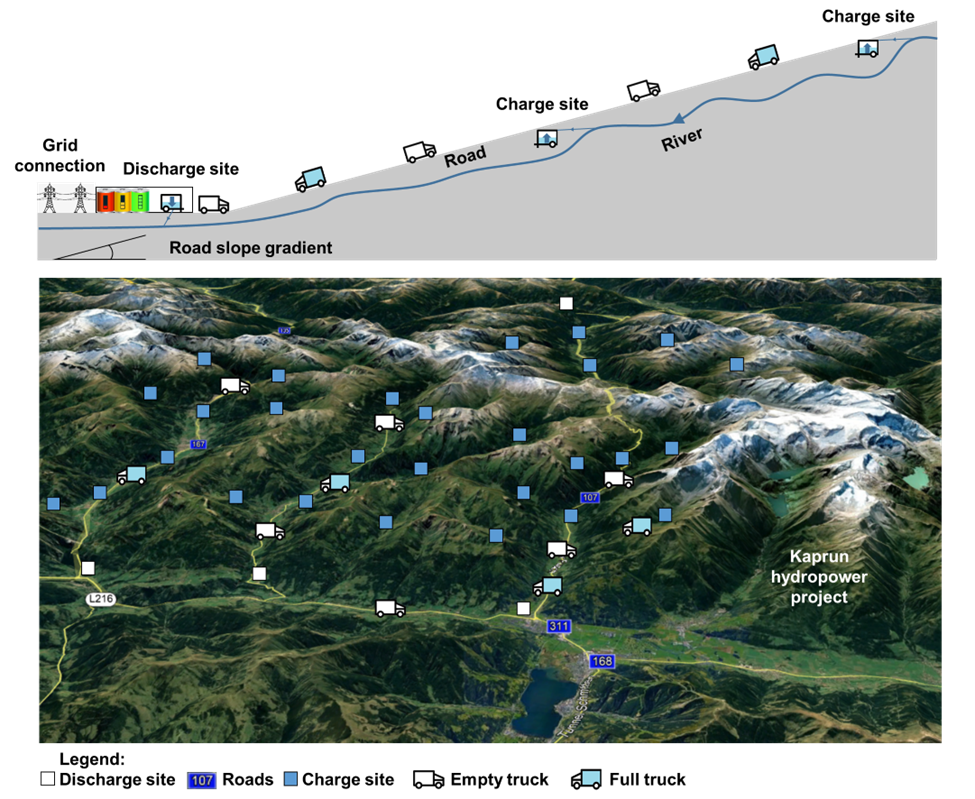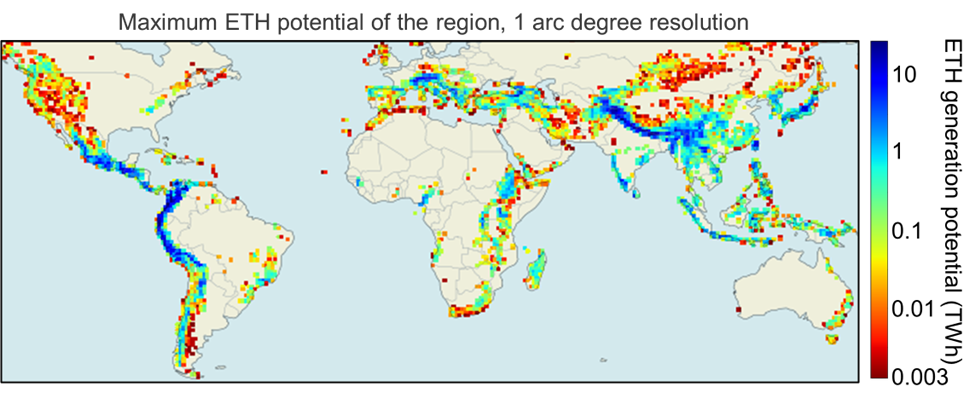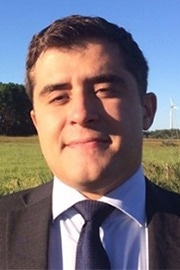AZoCleantech speaks with Julian Hunt from the International Institute for Applied Systems Analysis about his research into a new hydropower technology. This innovative technology could offer a flexible and clean solution for the generation of electricity in mountainous regions.
Why is it important to generate innovative technology that could offer a flexible and clean solution for the generation of electricity in mountainous regions?
Hydropower is one out of a handful of renewable energy sources, and, as of now, it is still limited to very specific locations. Small streams of water on mountains are not appropriate locations for conventional hydropower due to the usual gains in scale observed in conventional hydropower and its highly variable river flow. Thus, it is important to come up with novel innovative technologies to provide a clean solution for the generation of electricity, and this is where electric truck hydropower comes into play.
Truck containers can be filled with water from a small stream of water from the top of a mountain (it could take 1 minute to 3 hours to fill the container up). When it is full, a truck carries it down, while simultaneously charging the truck's battery with its regenerative braking system.
Can you give an overview of what you and the team have suggested in your research?
The idea consists of using an electric truck to transport water down a mountain and transform the potential energy in the water into electricity to charge the truck’s battery.
In the shift towards a highly sustainable future, hydropower is likely to grow in significance as a renewable energy source. How does this take advantage of a gap in the clean generation of energy?
Electric truck hydropower (ETH) does not compete with conventional hydropower. Conventional hydropower is designed to generate electricity in locations with a large and constant river flow. ETH would be applied in small streams, where the water extracted from the river would fill the container in one to three hours close to the top of the mountain.
How does your novel technology differ from traditional hydropower generation?
ETH is a modular solution for hydropower where the electricity generation depends on the number of electric trucks transporting water from the top to the bottom of a mountain. ETH is more flexible, as the trucks can generate electricity in different mountains, depending on precipitation and ice melting. The investment costs for hydropower are high and vary between 1000-5000 USD/kW, while ETH is low, varying between 200-500 USD/kW. The lifetime of hydropower is 40-100 years, while for ETH is 3-10 years. This results in a levelized cost for hydropower of 50-200 USD/MWh and ETH of 30-100 USD/MWh.
What makes this a more environmental-friendly system than traditional hydropower platforms?
ETH does not need to dam a river. ETH uses existing road infrastructure to transport water down the mountain. Construction is limited to a river water catchment and a parking spot for the trucks. This significantly reduces the environmental impact of ETH.
How does this system overcome previous issues with generating power in steep mountain regions?
Even though mountains have a large hydropower potential, hydropower plants are not often seen in small streams in mountain regions. This is because the river’s catchment area is small and the river flow varies significantly. Conventional hydropower also has significant gains in scale, with small plants having high generation costs.
ETH requires minimum construction and installation costs, it is a good alternative for generating electricity from these small streams.
Can you briefly explain how the system works?
An electric truck drives up a mountain with an empty container (the system weights 20% of a fully loaded truck), with its battery at 30% charge. When it reaches the top of the mountain, the truck’s battery has a 10% charge. The truck leaves the empty container to be filled with water, picks up a container filled with water, and drives down the mountain fully loaded with the regenerative braking system. The force required to break the truck while moving down the mountain transforms the potential energy of the water into electricity that charges the truck’s battery. The truck reaches the bottom of the mountain with its battery 90% charged. The battery is replaced by a 30% charged battery, the truck leaves the full container, picks up an empty container, and drives up the mountain again. Figure 1 presents the ETH system.

Figure 1: Electric truck hydropower system
What problems or drawbacks need to be addressed before the technology can be implemented?
The main drawback of the technology today is the need for a driver, which significantly increases the operation costs for this electricity generation alternative.
In the future, the truck and the system can be completely autonomous without the need for drivers, which would significantly reduce the generation cost of the alternative.
How much power do you estimate this system could deliver per year?
The global potential for the technology, assuming the existing road infrastructure and with a generation cost lower than 100 USD/MWh, is estimated to be 1.2 PWh per year, which is equivalent to around 4% of the global energy consumption in 2019.
What areas of the globe in particular would be ideally suited to host such technology?
For this study, areas such as the Himalayas, Andes, Alpes, and other mountainous regions would be ideal candidates, as shown in Figure 2 below.
Figure 2: World potential for electric truck hydropower.
Does this help offset any other environmental challenges? If so, how so?
Apart from generating electricity, ETH can also be used to store energy for the grid. As ETH uses batteries to generate electricity, the batteries can also be used to reduce intermittency from wind and solar generation, generate electricity during peaks and provide ancillary services.
What challenges are ahead before this process can be widely implemented?
ETH can be implemented today with existing technology and electric trucks in the markets. However, the truck has to operate autonomously to achieve the generation costs of 30-100 USD/MWh.
If electric truck hydropower is combined with cargo transportation, It could substantially reduce fuel consumption in regions with high mountains. For example, a good application for this technology is for a truck that delivers a full container from Washington state to Pittsburgh. On the return trip, just after the truck crosses the Appalachian Mountains, the truck can be filled with water and then drive down the mountain to charge its battery. When it reaches the bottom of the mountain, the truck would release the water and continue its trip with its battery charged.
After the success of your initial study, what are the next steps for your research, and what partners do you hope will accompany you on this journey?
The next step is to validate the estimates presented in the paper with a real case study. In other words, develop a project to test the technology in practice and get the overall efficiency of ETH with different truck models, different operational speeds and road slopes.
About Julian Hunt
 Julian Hunt is a research scholar in the Sustainable Service Systems (S3) Research Group of the IIASA Energy, Climate, and Environment Program where he focuses on implementing daily and seasonal storage energy technologies in MESSAGE models and analyzing the impact of these technologies on long-term energy planning. His research interests include analysis of energy systems, water-energy-land interfaces, climate change risks, energy security, and energy storage.
Julian Hunt is a research scholar in the Sustainable Service Systems (S3) Research Group of the IIASA Energy, Climate, and Environment Program where he focuses on implementing daily and seasonal storage energy technologies in MESSAGE models and analyzing the impact of these technologies on long-term energy planning. His research interests include analysis of energy systems, water-energy-land interfaces, climate change risks, energy security, and energy storage.
In addition to his position at IIASA, Hunt is also a visiting professor in the postgraduate program in mechanical engineering at the Federal University of Rio Grande do Sul (UFRGS), Brazil, where he teaches energy storage and supervises master's and doctoral students.
Prior to joining the S3 group, Hunt received a two-year IIASA/CAPES-Brazil research grant to map the global potential for seasonal pumped storage. He joined IIASA from the National Commission for Nuclear Energy (CNEN) in Brazil, developing hybrid nuclear and seawater desalination projects. He also previously worked at the Energy and Climate Change Branch of the United Nations Industrial Development Organization (UNIDO).
Hunt holds a D.Phil in Engineering Science from the University of Oxford and a B.Eng degree in Chemical Engineering from the University of Nottingham.
https://previous.iiasa.ac.at/web/ece/Julian_Hunt.html
Disclaimer: The views expressed here are those of the interviewee and do not necessarily represent the views of AZoM.com Limited (T/A) AZoNetwork, the owner and operator of this website. This disclaimer forms part of the Terms and Conditions of use of this website.